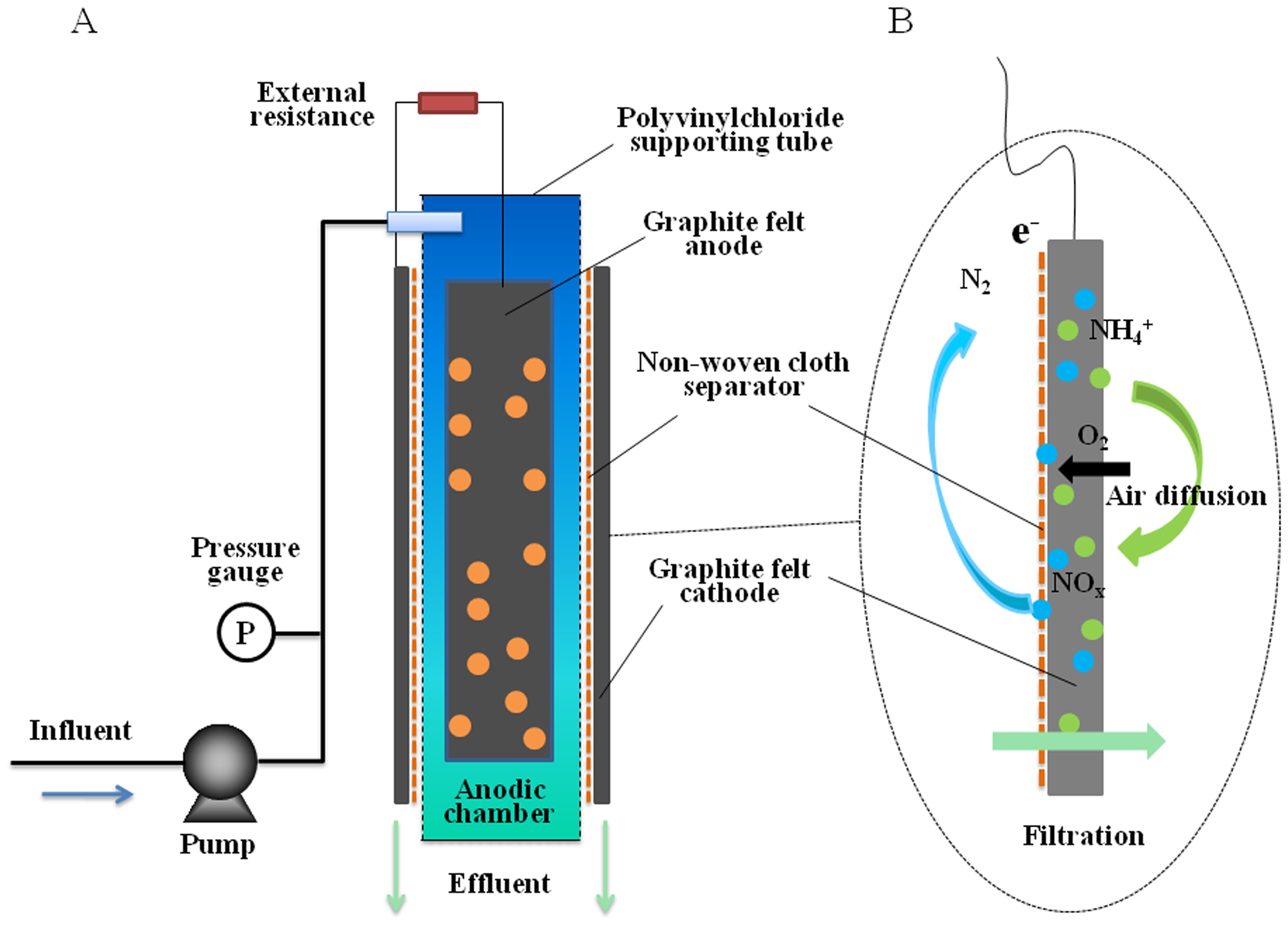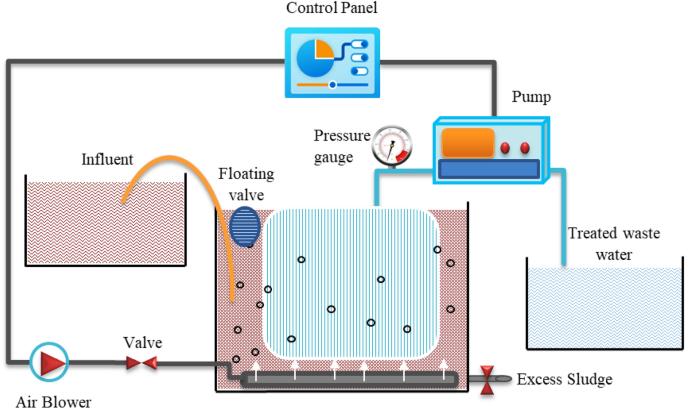Exploring the Benefits of Membrane Bioreactor in Municipal Wastewater Plants
Exploring the Benefits of Membrane Bioreactor in Municipal Wastewater Plants
Blog Article
Just How Membrane Layer Bioreactors Are Reinventing Water Filtration Systems
The development of membrane layer bioreactors (MBRs) represents a significant advancement in the area of water filtration, combining organic treatment processes with innovative membrane filtration modern technologies. As global water scarcity magnifies, the function of MBRs in promoting drinkable water reuse and lasting water management becomes progressively important.
Overview of Membrane Layer Bioreactors
Membrane layer bioreactors (MBRs) represent a significant innovation in water filtration technology, as they incorporate biological treatment procedures with membrane filtering. This combination improves the effectiveness of wastewater treatment by using microbes to weaken organic contaminants while at the same time using semi-permeable membranes to separate cured water from put on hold solids and virus.
The MBR system commonly is composed of an organic reactor where the microbial population metabolizes pollutants, complied with by a membrane layer purification device that preserves biomass and enables just tidy water to go through. This dual capability causes greater effluent quality contrasted to traditional treatment techniques. MBRs can be operated in both batch and continual circulation modes, using flexibility in style and application.
They also make it possible for the recuperation of water for reuse, thus adding to water sustainability campaigns. In general, MBRs are at the leading edge of enhancing water therapy efficiency and quality, showcasing the capacity for cutting-edge options in ecological administration.
Benefits of MBR Modern Technology
The integration of organic treatment with membrane filtration uses countless advantages for water filtration processes. One of the key advantages of Membrane layer Bioreactor (MBR) technology is its capability to effectively get rid of both not natural and natural impurities, bring about premium effluent. The membrane layers function as a physical obstacle, preventing suspended solids and microorganisms from going through, which improves the total safety and security and dependability of treated water.
In addition, MBR systems need a smaller impact compared to standard treatment methods, permitting much more reliable area application. This compact design is specifically beneficial in metropolitan setups where land is limited. MBRs also demonstrate operational flexibility, suiting differing influent qualities and flow rates without significant efficiency degradation.
Additionally, the process provides enhanced nutrient removal capabilities, particularly for nitrogen and phosphorus, which are important for avoiding eutrophication in getting waters. The reduced sludge manufacturing related to MBR innovation also equates to lower disposal costs, making it a cost-efficient remedy in the future - Membrane Bioreactor. In general, the benefits of MBR innovation setting it as a leading choice for lasting and innovative water filtration systems, attending to both ecological and financial worries
Applications in Water Filtration
Applications of Membrane Layer Bioreactor (MBR) modern technology in water filtration are impactful and varied, resolving various treatment requires throughout multiple sectors. MBRs efficiently combine biological therapy processes with membrane filtering, making them perfect for metropolitan wastewater treatment, industrial effluent administration, and even safe and clean water reuse initiatives.
In community setups, MBRs are significantly utilized to improve the high quality of treated wastewater, enabling conformity with stringent discharge guidelines and facilitating the recycling of water for watering and non-potable usages. Their portable style also makes them appropriate for metropolitan atmospheres where space is restricted.
Industrially, MBR technology is made use of to deal with process water and wastewater, specifically in industries such as food and drink, pharmaceuticals, and fabrics. By effectively eliminating pollutants and address put on hold solids, MBRs aid industries minimize ecological influences while recovering useful sources from wastewater streams.
Moreover, MBRs are getting traction in decentralized water treatment applications, where small-scale systems can be released in remote locations or creating regions. This versatility enables communities to attain sustainable water management solutions, enhancing access to clean water while lowering reliance on traditional therapy approaches.
Case Research Studies and Success Stories

In another instance, a textile production center in Bangladesh adopted MBR modern technology to resolve its wastewater challenges. The system reduced chemical oxygen demand (COD) degrees from 1,200 mg/L to less than 100 mg/L, therefore fulfilling regulatory standards and significantly decreasing ecological effect.
The link University of Cape Town's MBR setup has verified effective in dealing with greywater for non-potable reuse on campus. This project not only saves drinkable water but additionally functions as an educational version for sustainable methods.
Moreover, a fish and shellfish handling plant in Norway used MBR modern technology to treat effluents containing high levels of raw material, attaining over 90% toxin elimination. These case researches underscore MBR innovation's flexibility and its vital function in boosting water quality throughout diverse applications.
Future of Water Therapy Solutions
As global water shortage and contamination obstacles escalate, innovative water therapy remedies are ending up being progressively vital to guarantee lasting access to clean water. The future of water therapy lies in the integration of advanced technologies that enhance the performance and effectiveness of filtration processes. Membrane layer bioreactors (MBRs) are at the leading edge of this evolution, combining organic therapy with membrane layer filtering to generate premium effluent ideal for different applications.

Emerging patterns such as source healing from wastewater, including nutrients and energy, will further transform therapy centers into green hubs. In addition, improvements in nanotechnology and membrane layer materials promise boosted performance and longevity of filtering systems.

Verdict
In final thought, membrane layer bioreactors stand for a considerable innovation in water filtration technologies, successfully incorporating organic therapy with advanced membrane layer purification. The countless advantages, consisting of enhanced effluent quality and reduced spatial needs, make MBRs specifically ideal for metropolitan applications. Their role in safe and clean water reuse and sustainable water management highlights their importance in addressing worldwide water deficiency difficulties. Continued study and growth will further enhance the effectiveness and adoption of MBR innovation, making certain a durable future for water treatment remedies.
The development of membrane layer bioreactors (MBRs) stands for a substantial innovation in the field of water filtration, merging biological treatment procedures with sophisticated membrane filtering technologies. As worldwide water scarcity heightens, the role of MBRs in helping with safe and clean water reuse and sustainable water monitoring ends up being progressively important. They additionally make it possible for the healing of water for reuse, hence adding to water sustainability efforts.As worldwide water shortage and pollution difficulties heighten, innovative water treatment solutions are coming to be increasingly important to ensure sustainable accessibility to clean water. Their role in safe and clean water reuse and sustainable water administration highlights their value in resolving global water scarcity obstacles.
Report this page